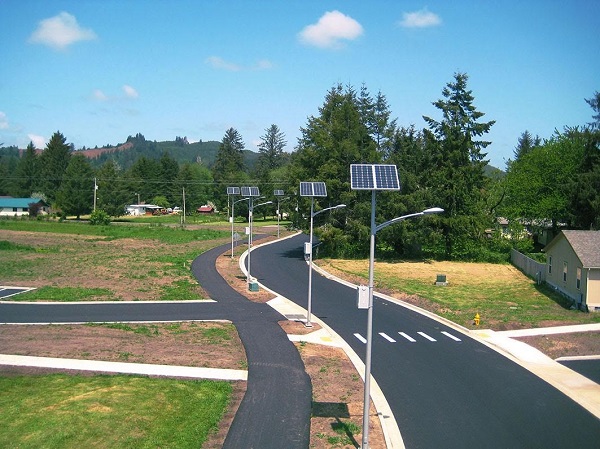How Solar Powered Street Lighting Saves Your City MoneyPosted by Stephen Shickadance in Most Popular.
We're sure founding and developing a city is never an easy thing. Our hats go off to mayors, city planners, budget wizards, and other key figures in planning to find the best ways to support a city's operations. We'll leave the expert work up to you. However, we're doing meticulous research behind our doors in how to find the best ways to cut corners in energy spending for your city, and the good news is that we've slashed city budgets by several thousands of dollars in the past. We've got a secret in energy that can let your city prosper, and the answer is in using solar-powered street lighting. Read on and we'll give you the cheat-sheet on how to save more money for your city. Solar Powered Street Lighting Removes Energy BillsThe best aspect of solar power is that it's free! Using underground electricity costs a monthly utility fee. Traditional lights that don't operate with solar panels draw power from the power grid which can be costly over time. How much? For the sake of simplicity, an average cost per light to draw power from the underground grid is roughly 20 dollars a month. That's an average for all light technologies, including L/HPS, CFL, Metal Halide, others. So, let's say your housing community has 20 lights. That's not uncommon. So if you'll allow us to do the math, that's 400 dollars a month on energy alone. Over the course of ten years that's 48,000 dollars, just for 20 lights alone. Let's take that to a global scale. Outdoor lighting costs approximately 10 billion dollars a year, globally, to operate! With solar, you don't have any energy costs. Using natural, sun-provided energy to power the lights means you pay zero dollars a month for energy usage. Add that saved money back into your city budget and use it for other important projects. No Trenching or Wiring FeesThe second method that solar-powered street lighting uses to save you money is through being self-sufficient. As before, each solar light doesn't need connectivity to the main power grid, so that means project managers and city planners can skip paying the trenching, wiring, and labor fees altogether. Trenching is extremely expensive. The price can vary by linear foot depending on what's nearby the project site, what condition the soil is in, and other factors. You'll need to rent the equipment and hire professionals for the labor. Then there are backfill fees as well. Or, you could decide to switch to solar and skip all that hassle and expense. The average price percentage saved for the total price of a lighting project, from the initial quote to the first night of operation, is typically 20%, but some projects can go as high as even 45%, depending on the needs of the project. Put the saved money towards a company party, we won't tell. Plus, properly designed solar lights have approximately 5 days of autonomy, meaning even on overcast days the lights will perform well since they use the extra energy from the batteries stored on their poles. Solar Incentives and Tax BreaksThe third method that solar-powered street lighting saves your city money is via tax credits. The current solar tax credit extension can provide a 26 percent return for 2020 on the initial solar investment—not exactly saving money, but getting money back is always a positive thing. So not only do you save on energy and installation / trenching fees, you get money back on tax returns. A major website to take advantage of tax incentives and breaks is the DSIRE site. Be sure to visit the site to learn what's available in your area, or check out our own page on solar incentives. So that's specifically why we stand by solar street lighting as a method of lighting your city the economical way without cutting corners. We're part of a revolution in saving money and going green. Take a gander at how your growing city can revolutionize your energy savings by sticking with solar street LED lights. We're prepared to give you a full assessment for your project. Contact us to learn more, or browse our comprehensive solar lighting guide to get even more specifics.
Most Popular
|
ArchivesNo Archives Categories
Want More Info? |
LATEST NEWS & ARTICLES
